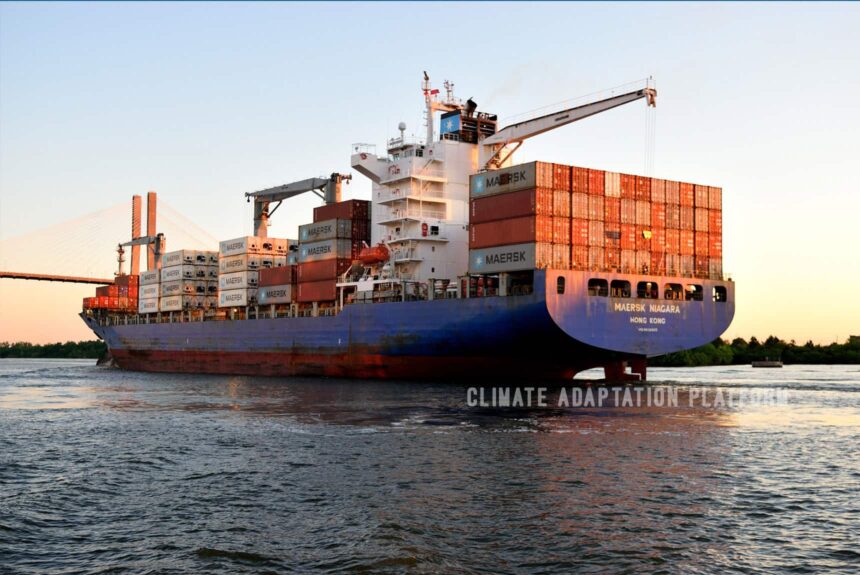Ships are the most preferred mode of transport of the world’s goods – around 90% of them traded through oceans through the world’s trading fleet of about 63,000. Unfortunately, most of these ships rely on diesel engines that run on cheap, molasses-thick fuel called bunker oil, emitting huge amounts of carbon emissions.
According to the European Commission, shipping accounts for 3% of the total CO2 emissions. While the figure seems insignificant, the global demand for shipping can increase its emissions by 10-13% within a few decades. As a result, the sector is increasingly facing pressure to reduce its carbon footprint.
The Clydebank Declaration for green shipping corridors
The declaration was launched at COP26 in November 2021 and signed by several countries—including Japan, the United Kingdom, and the United States who have also declared a target for net-zero shipping emissions by 2050. Building on the Zero-Emissions Shipping Mission created in July 2021 by Denmark, Norway and the US, the initiative is designed to drive forward the decarbonisation targets set by the International Maritime Organisation (IMO).
The International Maritime Organisation (IMO) is the United Nations agency responsible for regulating shipping. The organisation aims to reduce ocean-vessel emissions in half by 2050, which will require the industry to plan a pathway towards cleaner fuels and align it to the Paris Agreement to keep the global average temperature well below 2°C or pursue efforts to limit it to 1.5°C above pre-industrial levels.
The signatory countries committed to establishing six “green corridors” by 2025 comprising decarbonised maritime routes, including land-side infrastructure and vessels between two or more ports.
To achieve these goals, signatory countries, 22 in total with the numbers expected to increase in the future, pledged to take the following actions:
- Facilitate the establishment of partnerships, with participation from ports, operators, and others along the value chain, to accelerate the decarbonisation of the shipping sector and its fuel supply through green shipping corridor projects.
- Identify and explore actions to address barriers to the formation of green corridors. This could cover, for example, regulatory frameworks, incentives, information sharing, or infrastructure.
- Consider including provisions for green corridors in the development or review of National Action Plans.
- Work to ensure broader consideration for environmental impacts and sustainability when pursuing green shipping corridors.
Read more about The Clydebank Declaration
Are green corridors feasible?
McKinsey & Company produced a report titled “The Next Wave Green Corridors” that investigated the feasibility of green corridors. The report analysed the feasibility of the two shipping routes – the Australia-Japan iron-ore route and the Asia-Europe containership route, as these have the potential to become green corridors.
According to the McKinsey article, green corridors will help achieve the shipping industry’s net-zero goals for two reasons.
First, it will create favourable conditions for decarbonisation, allowing policy maker “to create an enabling ecosystem with targeted regulatory measures, financial incentives, and safety regulations”.
Secondly, it will reduce shipping emissions on other routes. Once the green corridor infrastructure is established, it can also be used for other shipping routes.
These two routes that the report analysed show that rapid decarbonisation is feasible and will give stakeholders the confidence to invest, coordinate, and deliver solutions at scale. However, the cost of the zero-carbon fuel and vessels are obstacles to shifting to zero-carbon fuel.
To reduce the cost, the report recommends that Stakeholders across the value chain can work together to pool demand, share the risk of building new zero-emission vessels, and strengthen the partnership among shipowners, steelmakers, and miners – in the case of the Australia-Japan iron-ore route can also help de-risk stakeholders’ investments.
Read the report here: The Next Wave, Green Corridors
Sources:
Emissions-free sailing is full steam ahead for ocean-going shipping. (2022, September 6). European Commission. Retrieved from https://ec.europa.eu/research-and-innovation/en/horizon-magazine/emissions-free-sailing-full-steam-ahead-ocean-going-shipping
Clydebank Declaration for Green Shipping Corridors. (2021, November 10). UKCOP26. Retrieved from https://ukcop26.org/cop-26-clydebank-declaration-for-green-shipping-corridors/
The Clydebank Declaration: Green Corridors Kickstarting The Adoption of Long-term Solutions. (2022, March 28). Watson Farley & Williams. Retrieved from https://www.wfw.com/articles/the-clydebank-declaration-green-corridors-kickstarting-the-adoption-of-long-term-solutions
Green corridors: A lane for zero-carbon shipping. (2021, December 21). McKinsey. Retrieved from https://www.mckinsey.com/capabilities/sustainability/our-insights/green-corridors-a-lane-for-zero-carbon-shipping



Leave a Reply